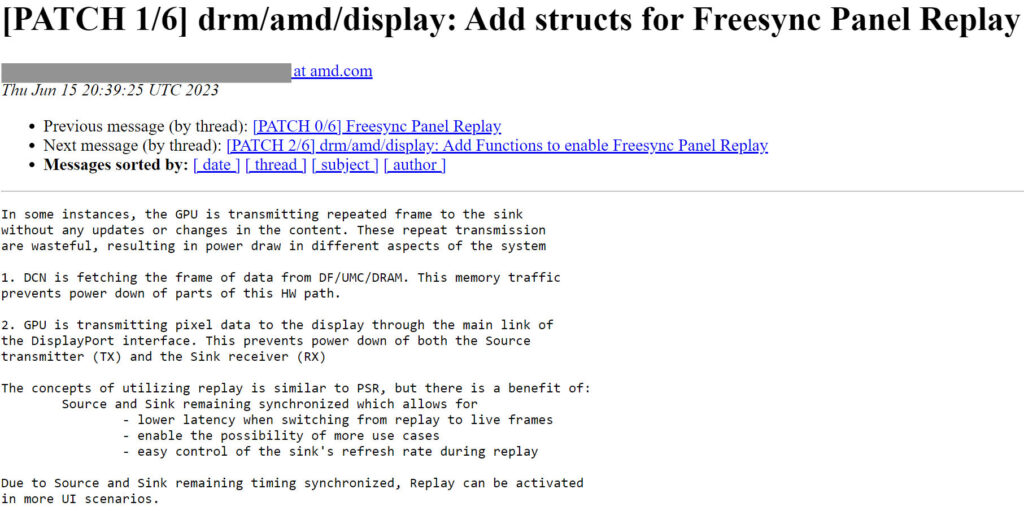AMD Preparing New ‘FreeSync Panel Replay’ Technology for Improved Battery Life

AMD is preparing a new feature for its Ryzen laptops utilizing DCN 3.1.4 and newer called ‘FreeSync Panel Replay‘. Put it, this feature is better than the good-old ‘Panel Self Refresh’. Why? Well, it would allow users to enjoy more power savings than before, thanks to a few tweaks.
What is Panel Self Refresh
To understand FreeSync Panel Replay, we need to understand Panel Self Refresh or PSR first. PSR (not a proprietary tech by AMD) intends to reduce power consumption in applicable scenarios.
Whenever you’re playing a fast-paced shooter, you will need those extra frames from your GPU, resulting in a higher power draw. However, when you you’re doing something static, say reading an e-book, pushing out 144 frames in one second (144Hz) is nothing more than a waste of electricity.
PSR saves a small copy of the contents of your memory buffer into a small memory package. Resultantly, your GPU does not have to pump out multiple still images in one second.
Is ‘FreeSync Panel Replay’ Any Better?
The short answer is, yes. AMD recently added ‘FreeSync Panel Replay’ to its Linux kernel graphics driver. The working of this feature has been explained by AMD itself;

Basically, FSPR is an improved version of PSR, enabling higher savings and being more applicable. The exact metrics of power efficiency have not been made public by AMD, yet.
This update keeps the source (sender) and the sink (receiver) in sync, leading to lower latency. Moreover, it aims to replay pixel data to the sink, resulting in lower power consumption.
The concept of FSPR is the same as PSR, though it has added benefits such as enhanced applicability, easier control of the display’s refresh rate, and lower latency when the display switches to live frames.
Source: Freedesktop





